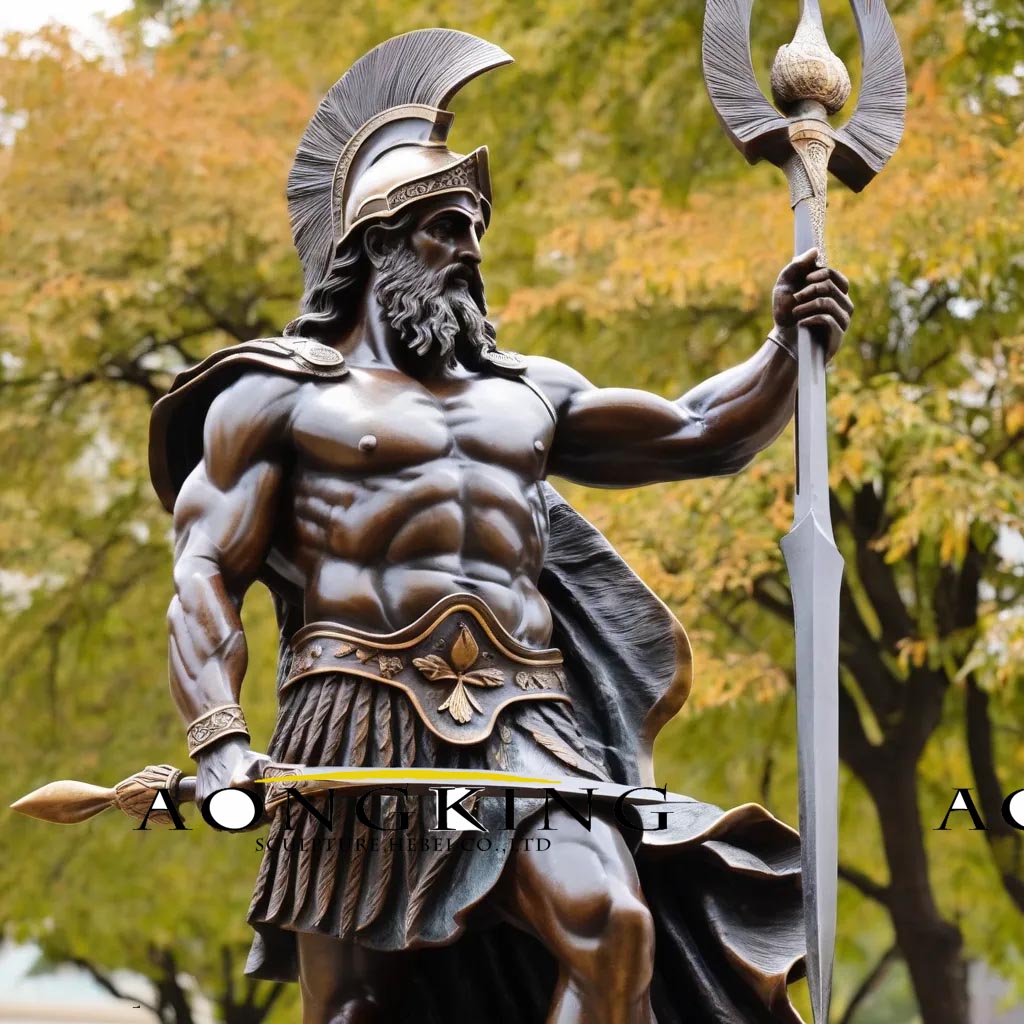* I used natural marble powder compressed at high pressure in its construction. In addition, there are composite materials that I use. Its production requires a long and laborious process. I used aging paint techniques to make the colors look worn. I added a polished and painted wooden pedestal to its base.
* SIZE AND WEIGHT
Width: 15cm(6inc)
Height: 34cm(13.5inc)
Depth: 15cm(6inc)
* MYTHOLOGICAL STORY OF THE GOD ARES
Ares is the Olympian god of war. However, unlike Athena, he represents merely its destructive capacity and is typically the personification of sheer violence and brutality. Consequently, he was loved neither by gods nor by men. That is, with the exception popular of Aphrodite, who bore him many children out of wedlock
In art, Ares is usually represented wearing a helmet, a shield and either a sword or a spear. He drives a four-horse chariot and is accompanied by dogs or vultures. Sometimes, his sons Deimos and Phobos are also depicted beside him.
Unlike his nobler Roman counterpart Mars, Ares was an unpopular god and never developed beyond the image of a divine battle-frenzy butcher. Consequently, only a few epithets have reached us. Unsurprisingly, few of them are flattering: “the bane of mortals,” “the slayer of men,” “the city-stormer,” “the armor-clattering,” “the arm-bearing.”
Ares was the oldest child of Zeus and Hera, and, according to those who think that Hephaestus was born through parthenogenesis, their only son. Either way, he certainly had two sisters: Eileithyia, the goddess of childbirth, and Hebe, the goddess of eternal youth.
ince he was the savage god of senseless war, Ares was almost universally detested. At one point, after Ares is wounded in battle by Diomedes, even Zeus calls him “the most hateful of all the gods,” remarking that if he hadn't been his son, he would have surely ended up in Tartarus with Cronus and the Titans.
The episode with Diomedes is only one of many in which Ares comes off second-best in his martial encounters. During the Trojan War, Athena needs no more than one stone to floor him, after which she spends some time mocking him and bragging of her superiority as a warrior.
Heracles defeats Ares not once, but twice – first during the battle of Pylos, and then after killing his son Cycnus. Most humiliatingly, Otus and Ephialtes, the Aloadae, once manage to kidnap Ares and imprison him in a bronze jar for thirteen months. Homer says that if their stepmother Eriboea hadn't told Hermes about it, this would have spelled the end of Ares.
Ares had many women, but none of his affairs was as famous as the one he had with Aphrodite. At the time, the goddess of beauty was married to Ares' brother, Hephaestus, who was told by Helios of his wife's transgressions. Hephaestus fashioned a delicate, almost invisible, bronze net, which he put on the bed where Ares and Aphrodite were supposed to lie. When they finally did in his absence, he stormed into the room with a host of gods. The Olympians laughed for days at the helplessly entrapped lovers.
However, it seems that in this case, Ares had the last laugh, since Aphrodite bore him at least three and as many as eight children. Hesiod lists only Deimos, Phobos, and Harmonia. Later authors include Adrestia and some or all of the four Erotes: Eros, Anteros, Pothos, and Himeros.
Product code: God of War Ares Statue - Made of Marble, God of War in Greek Mythology, popular Ares Statue




